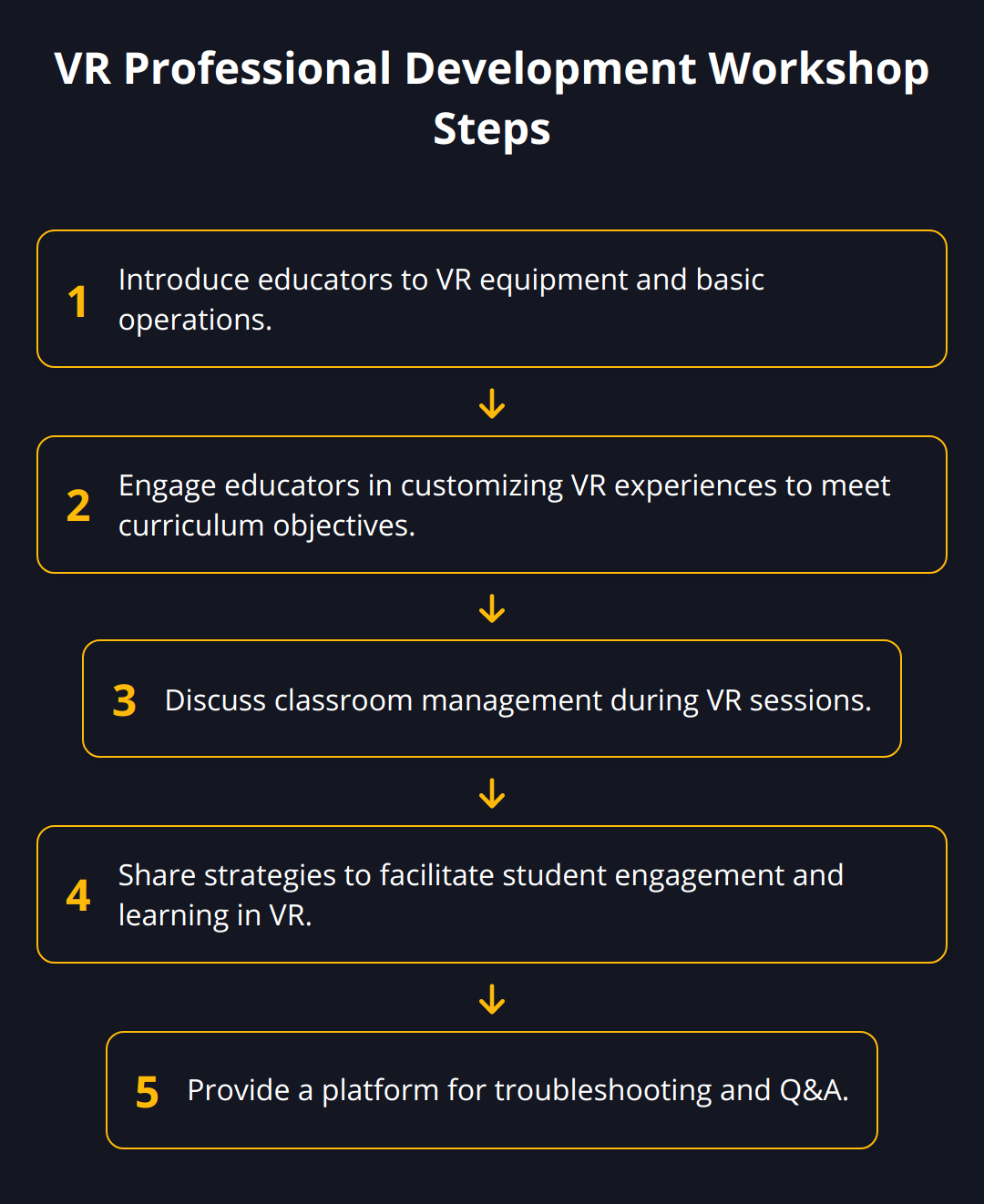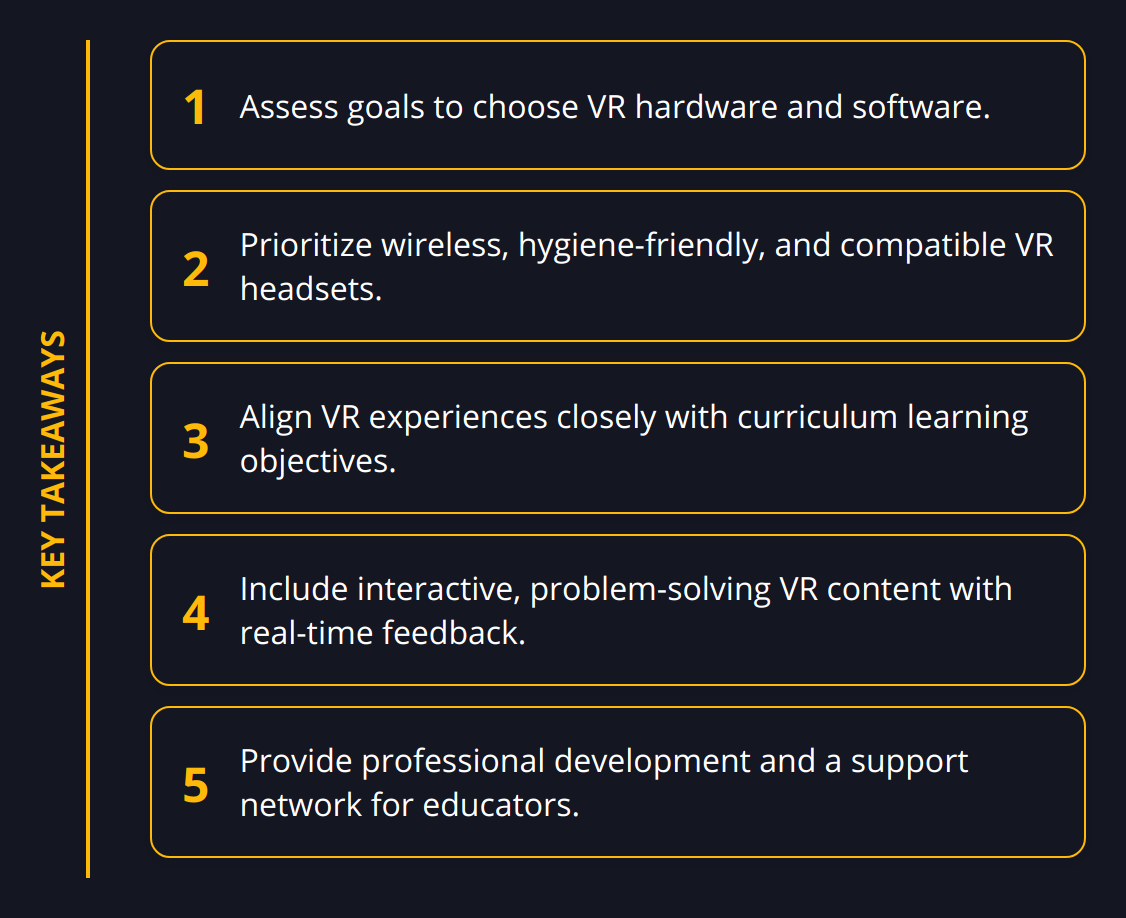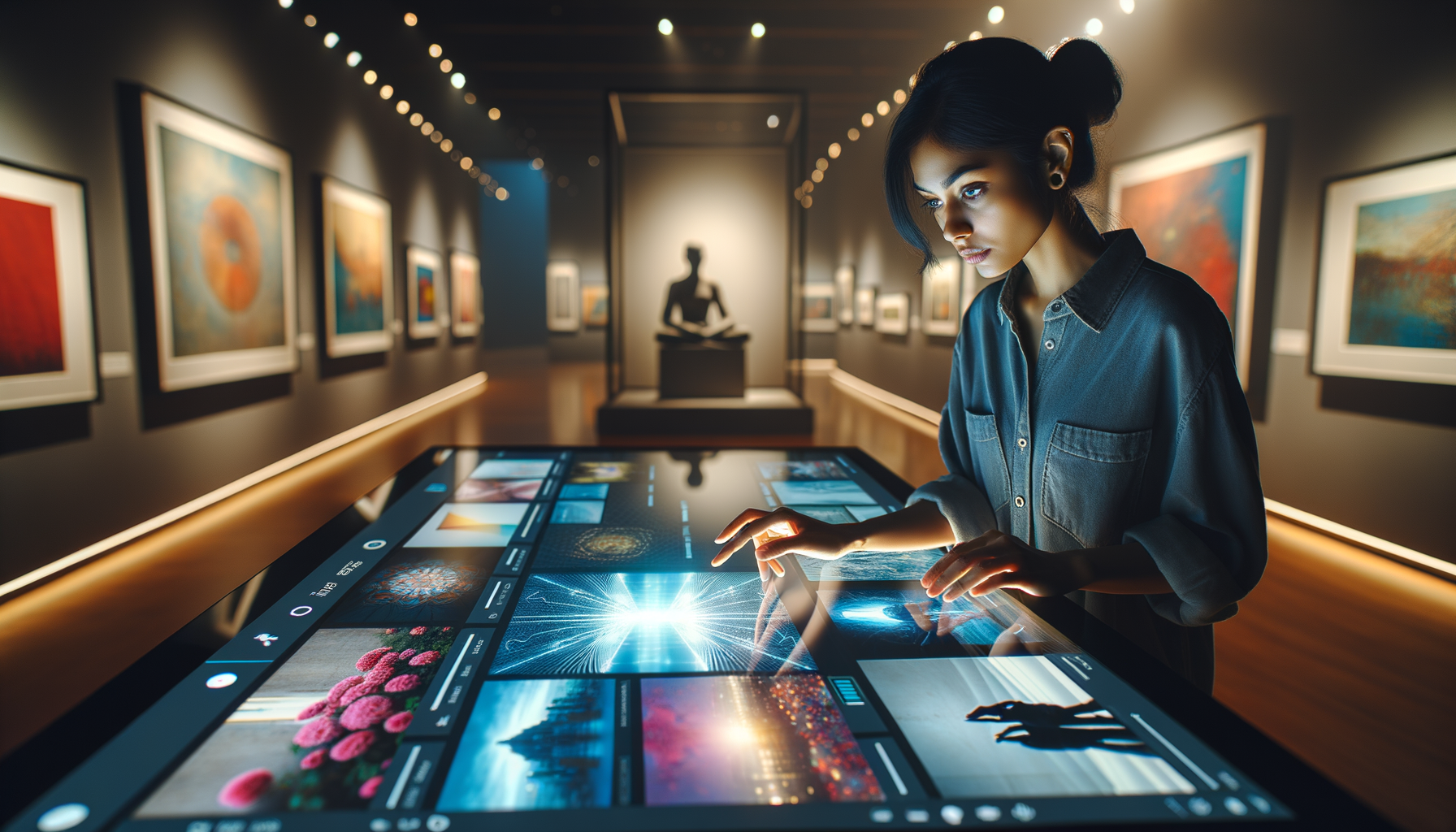Virtual reality (VR) technology is transforming classrooms around the globe into boundless, interactive learning environments. At Newroom Connect, we recognize the value of integrating VR into education to magnetize student engagement and bolster learning outcomes.
Selecting suitable VR technology and designing captivating learning experiences can be daunting tasks for educational institutions. This post aims to share practical tips on how to successfully implement VR in your classrooms, ensuring a positive impact on both teaching and learning.
Selecting VR Hardware and Software
Venturing into virtual reality in education demands careful selection of both hardware and software, which serves as a foundation for immersive learning experiences. It’s critical to weigh the unique requirements of your educational program along with the specific needs of students and educators.
Assess your goals and curriculum needs first. Are you aiming to provide students with immersive experiences of historical sites, or are you focused on interactive science labs? Each objective might require different specs from your VR equipment. For instance, detailed historical reconstructions may need higher resolution and performance, whereas science simulations could demand accurate motion tracking and control.

Comfort can make or break the VR experience. Choose headsets with adjustable straps, cushioning, and focus adjustments to accommodate a diverse group of users. For younger students, look for lighter models to reduce strain. Also, consider hygiene as VR headsets will be shared; options with removable and cleanable face pads are advisable.
Budget considerations are paramount. Quality VR doesn’t come cheap, but there are cost-effective solutions that provide good value without compromising the experience. Keep in mind, the expense isn’t limited to the initial purchase. Maintenance, content updates, and eventual hardware upgrades also need to be factored into the overall cost.
Here are specific tips to help in your selection process:
-
Compare headset display resolutions and field of view.
-
Prioritize wireless systems to avoid tripping hazards.

-
Ensure the VR platform supports the educational content you plan to use.
-
Look into the battery life of the headsets for uninterrupted learning sessions.
-
Check compatibility with the existing devices and infrastructure in your school.
-
Consider future-proofing by selecting hardware with upgradability options.
Remember that software is just as important as hardware. Choose VR content platforms known for their educational value and robust support. Some platforms also offer virtual reality training tips and resources, which can be helpful for teachers.
Effective implementation of VR in classrooms is not solely about having the best technology; it’s about having the right technology that fits your educational goals, enhances learning, and remains within budget. With these practical considerations, you can embark on a path to successful VR integration in education.
Crafting Immersive VR Lessons
When weaving virtual reality into your curriculum, align your learning objectives with VR activities to create immersive experiences. Here’s how to approach this process:
Firstly, map your learning goals onto VR scenarios that will capture your students’ imaginations and solidify their understanding. For example, if your goal is to teach history, transport students to ancient civilizations. On the flip side, a science objective could involve dissecting a virtual frog, where every incision provides deeper anatomical insight.
Interactive content is at the heart of successful VR learning. Engagement soars when students physically interact with their environment. Consider incorporating puzzles that require critical thinking or simulations that demand decision-making to solve real-world problems. In languages, immersive environments where students converse with native speakers can improve language acquisition faster than traditional methods.

Feedback and assessment tools embedded in VR provide immediate reinforcement. Gamify experiences with reward systems for each milestone achieved and track progress through virtual scoreboards. This not only motivates students but also allows educators to monitor individual progress and offer tailored support.
Here’s how you can elevate your VR lesson plans:
-
Align VR activities with specific learning outcomes for targeted skill development.
-
Include challenges that foster problem-solving and critical thinking.
-
Utilize interactive e-learning content with real-time feedback mechanisms.
-
Track student progress through integrated assessment tools for immediate evaluation.
-
Opt for VR experiences that promote collaboration for complex task completion.

By religiously mapping curriculum goals to VR activities, crafting interactive content, and weaving in assessment tools, you’ll design a VR classroom that’s not just a novelty, but a powerful learning tool. Keep it practical, engaging, and aligned with your educational objectives, and watch student outcomes soar.
Training Educators for VR
As we integrate virtual reality into classrooms, equipping educators with the right skills and knowledge is key. The focus is on transforming teachers into VR champions who can confidently guide students through virtual landscapes. Let’s look at how this can be achieved.
Professional Development is Essential
Professional development workshops focusing on VR technology should be standard for all educators gearing up for VR adoption in the classroom. These sessions provide teachers with hands-on experience that is vital for understanding the intricacies of VR and its application in education.

Workshops should cover not only the operational aspects, such as navigating and troubleshooting equipment, but also the pedagogical strategies needed to leverage VR for educational excellence. A well-rounded workshop might look like this:
-
Sessions on customizing VR experiences to meet different curriculum objectives.
-
Discussions about managing classroom dynamics when integrating VR sessions.
-
Strategies to facilitate and supervise students during VR experiences, maintaining a balance between guidance and exploration.
Building a Strong Support Network
It cannot be emphasized enough: teachers need ongoing support as they implement VR in their classrooms. Establishing a community of practice provides a forum for teachers to share experiences, troubleshoot issues, and exchange effective VR teaching strategies.
Such a network could be fostered through online forums, regular meet-ups, or mentorship programs pairing less experienced teachers with VR-savvy ones. The benefits are twofold: educators can collaborate to enhance their lessons, and they also receive moral support which can be invaluable in adopting new technologies.
Pairing VR with Effective Teaching Practices
Integrating VR should enhance, not replace, time-tested teaching practices. VR offers opportunities for experiential learning where students can “learn by doing” in a risk-free environment. Here’s how to marry best teaching practices with VR technology:
-
Plan VR sessions that require students to apply concepts they’ve learned in class, promoting deeper understanding.
-
Use VR as a tool for storytelling, enabling students to immerse themselves in the narrative of historical events, literary works, or scientific processes.
-
Implement role-playing activities within the VR environment to foster empathy and perspective-taking skills.
In summary, VR classrooms present a unique opportunity for interactive and immersive education, but they require teachers to be well prepared and supported. Through targeted professional development, strong support networks, and the integration of effective teaching practices, VR technology will not just be another classroom gadget – it will transform education into an experience that stands out in students’ memories.
As a next step, you might want to know more about creating effective eLearning strategies to complement VR experiences or explore best practices for virtual exhibitions, which can be integrated into VR learning scenarios.
Final Thoughts
The introduction of VR in the classroom has marked a significant shift in how we approach education. Its impact on student engagement and learning outcomes is evident, as students immersed in VR environments are often more focused and eager to interact with the subject matter. Evidence points to higher retention rates and increased motivation when learners are presented with hands-on, experiential learning opportunities that VR uniquely provides.

Looking ahead, the trajectory for VR in education is promising and vibrant. As the technology advances, we anticipate even more innovative uses that will further personalize and enhance the learning experience. Continuous adoption and innovation in VR are essential to keep pace with the evolving educational landscape. Educators who embrace VR and integrate it effectively will shape a future where students are not just passive receivers of information but active participants in their educational journey.
We at Newroom Connect are dedicated to this transformative vision, providing cutting-edge software platforms that make immersive educational experiences accessible and impactful. Our platform is designed to simplify the creation and management of virtual exhibitions, showrooms, and e-learning environments. Whether it’s a detailed virtual exhibition or a comprehensive e-learning strategy, we’re here to support educators and institutions in navigating the exciting realm of VR in education.
To sustain the momentum, educational institutions and educators should:
-
Regularly evaluate and update their VR content to reflect the most current information and technology.
-
Actively seek out professional development opportunities to stay informed about the latest VR teaching methodologies.
-
Create a culture of sharing best practices and experiences among educators to foster a community of continuous improvement.
We believe in the power of VR to transform the educational experience, making it more dynamic, engaging, and effective. By fostering an environment of innovation and embracing new technologies like those provided by Newroom Connect, educators and learners alike can look forward to a future rich with possibilities. Explore our platform to embrace this exciting frontier and reach out to our expert support team for guidance in bringing your virtual spaces to life. Together, let’s shape an educational future that’s as immersive as it is inspiring.


